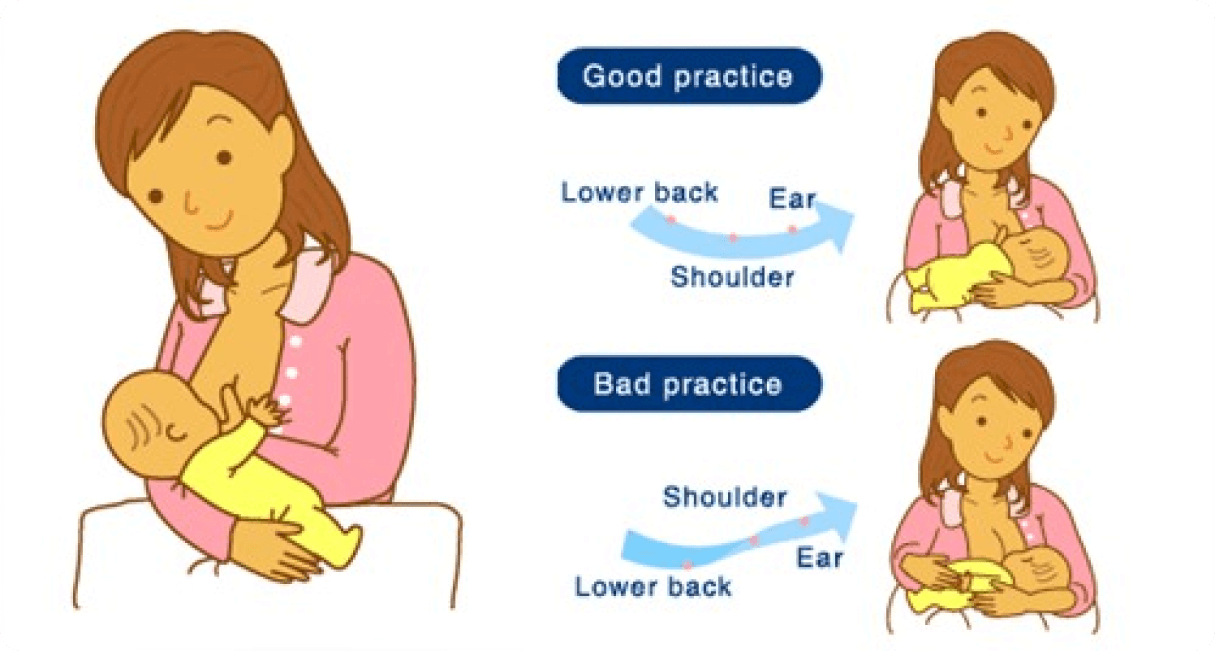
Hold the baby in an appropriate position so that you can breastfeed properly and comfortably
Usually, mothers have to breastfeed their babies for around 8-10 times a day and the duration for each feed is around 10-30 minutes. Mothers can get tired and stressful so it is important for them to feed their babies in a comfortable and relaxed position so that they can continue.
It is important to hold the baby in an appropriate position for both the mother and the baby. It will help reduce risks and problems. Moreover, it will allow the baby to drink effectively and help reduce the stress on the mother’s breasts. Here are some specific breastfeeding newborn tips.
How to hold your baby?
It is critical to position the baby properly while breastfeeding and to maintain appropriate posture. There are three ways you can position your baby for breastfeeding. The following items are important for all of them. The mother should be reclining against cushions or a wall and is in a relaxed position. The baby should be awake, not crying and he should be calm.
The baby’s body should be straight and the ears, shoulders, and lower back should form a straight line and should be facing the breast. Make sure your fingers are far enough from the areola while supporting your breast with one hand. You don’t need to squeeze the nipple to push it out. There won’t always be a need to support your breast with your hand.
You will find a posture that is most appropriate and comfortable for you.

Basic positioning
1: Side hold/cradle hold
You will have to hold the baby at breast level and your baby’s stomach should be closer to yours. Support the baby’s head with your arm while the baby’s head is on the same side as the breast you are nursing with. This is one of the common breastfeeding positions.
2: Cross cradle hold/transitional hold
This is the position in which you support the baby’s base of the neck using the opposite arm to the breast you are nursing with and supporting the breast with the other hand.
Sometimes, babies don’t enjoy it when you press hard on the baby’s head so this is a good position for this kind of baby. It is also the best position for the babies with lower birth weight and the babies who face difficulty latching onto the breast. Later, you can shift to the common cradle hold after the baby has latched on.
3: Clutch hold/football hold
In this position, you support the breast with the hand opposite to the breast you are nursing with and support the head with the other hand. The baby‘s legs will pass through the arm supporting him pointing backward. You need to hold the baby close to your side.
This position is best for babies having difficulty latching on and also for babies with sensitive health. It is also favorable for mothers having breast problems and also for mothers with cesarean scars because the baby won’t be pressing directly on the abdominal area.
4: Straddle hold
This position involves you placing the baby on your knees while supporting the baby’s head and shoulders. It is particularly a better position for babies finding it difficult to latch on and for the babies who are smaller in size.
Some of the mothers also do this while breastfeeding.
Some mothers use rubber bands or hair clippers to keep their clothes back while breastfeeding so that the baby can easily feed without getting prevented by clothes. We are hopeful that both mothers and babies will be able to find better and comfortable breastfeeding positions.

